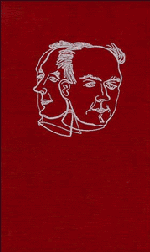Book contents
- Frontmatter
- Contents
- NEW MUSICAL RESOURCES
- PART I TONE COMBINATIONS
- 1 The Influence of Overtones in Music
- 2 Polyharmony
- 3 Tone-quality
- 4 Dissonant Counterpoint
- PART II RHYTHM
- PART III CHORD-FORMATION
- DEFINITIONS OF TERMS
- A NOTE ON THE TYPE IN WHICH THIS BOOK IS SET
- Notes on the text
- Henry Cowell's “New Musical Resources”
- Index
1 - The Influence of Overtones in Music
from PART I - TONE COMBINATIONS
Published online by Cambridge University Press: 05 June 2015
- Frontmatter
- Contents
- NEW MUSICAL RESOURCES
- PART I TONE COMBINATIONS
- 1 The Influence of Overtones in Music
- 2 Polyharmony
- 3 Tone-quality
- 4 Dissonant Counterpoint
- PART II RHYTHM
- PART III CHORD-FORMATION
- DEFINITIONS OF TERMS
- A NOTE ON THE TYPE IN WHICH THIS BOOK IS SET
- Notes on the text
- Henry Cowell's “New Musical Resources”
- Index
Summary
The reason for reviewing certain scientific and historical aspects of music is not to bring out new facts, but to present these facts in a new light, and to seize and emphasize certain salient ideas which there will be occasion to apply, and which are necessary to the understanding of what follows; for while the musical public may be familiar with the idea that our musical materials have undergone a change from simple to more complex during musical history, it is apt to be a general and rather vague notion, rather than one about which many particular facts are known; and comparatively few know how closely the history of harmony has followed the series of natural overtones. Many musicians know the intervals produced by the lower members of the overtone series, but few have considered all the different aspects of the relationships formed by them, or have studied higher overtone relationships.
Music is based upon, and conditioned by, the physical laws of sound-waves. These laws disclose that musical tones have a relation to each other which is measurable by mathematics. They further show that each tone produced generates a series of overtones which are related to that tone, and to each other, by definite mathematical ratios. These overtones stretch upwards indefinitely. Our ear can follow them a certain distance; instruments can follow them further yet; but the theoretical range of them is beyond our power to follow. On many instruments, such as the piano, the whole series as far as the ear can follow is present in almost equally graduated shades, the lowest being most easily heard, the higher ones growing gradually dimmer and dimmer. On some instruments, owing to their construction, certain overtones are lacking or very dim, while others are more prominent. Such differences are the means of giving individuality of tone-quality to different instruments.
- Type
- Chapter
- Information
- New Musical Resources , pp. 3 - 24Publisher: Cambridge University PressPrint publication year: 1996



